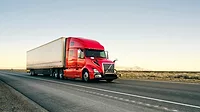G.G. Distributing prioritizes drivers needs
Beer wholesaler opens new facility in Tyler, Texas

The true measure of a successful distribution operation is how well it manages change. And most wholesalers can learn a thing or two about that from G.G. Distributing.
G.G. Distributing, formerly Giglio Distributing, has been a fixture of the Texas beer distribution business for nearly seven decades, and is now run by the second and third generation of the founding family. Its major suppliers include MillerCoors, Constellation, Heineken, Mark Anthony Brands (including the company’s current juggernaut, White Claw hard seltzer), Sierra Nevada, New Belgium and many others — as well as a host of non-alcohol SKUs.
The wholesaler distributes about 6.3 million cases from 42 suppliers in 38 counties in eastern Texas, from the Oklahoma and Arkansas borders down to Walker County. When combined with its sister location in Beaumont — which continues to bear the name Giglio Distributing — total volume is 9.3 million cases.
“With all of those counties, it takes us about 28 delivery routes,” says Fleet Manager Brandon Murphy. “For some of those routes, we do a cross-dock situation.”
The distributor runs those 28 routes using tractor trailers. It also operates three non-alcohol routes, which it services with smaller, eight-bay sideload trucks. The company has mostly deployed Kenworth vehicles, but has recently brought in some Volvo and Freightliner vehicles.
“We’re experimenting with them, trying to expand our horizons on those trucks,” Murphy says.
The distributorship recently consolidated two facilities — Palestine, Texas, and another in Longview, Texas — into its 220,000-square-foot location in Tyler, Texas.
“We had to reroute everything out of here because we were hitting stores from every direction, Murphy notes. “We actually had to add two routes because of the drive time for some of the drivers; they couldn’t make as many stops. In the middle of the re-route, we lost about 70 employees, just getting used to the routes and the change. Those guys that were living in Palestine had to drive to Tyler, which was much farther — it went from a five-minute drive to work to an hour and five minutes.”
G.G. Distributing was able to hire drivers in the new area and had a stable, fully operational team in place within about six or seven months of the move into the Tyler facility.
Driver quality of life is a major priority for the distributor, and it’s been a critical component in staff retention. To that end, above-average compensation is just the tip of the iceberg.
“They work four days a week, Tuesday through Friday, and they’re off most holidays,” Murphy says. “They get five days off for Thanksgiving every year, Thursday to Monday. It’s little things like that we put in place. Since we went through that turnover, we only lose the weakest drivers.”
Such benefits are especially crucial in a state like Texas, which is notoriously tough on distributors’ driver retention records.
“The oil business is our biggest competitor,” explains General Manager Julian Rayzor. “[Drivers] can make a lot of money driving in the oil business.”
The fleet has deployed some non-CDL vehicles to attract a broader driver pool. “It’s easy to find someone with a class C license, not so easy to find someone with a commercial license,” Murphy says.
Simplifying drivers’ workloads and eliminating as many errors as possible before the cases even get on the trucks also has been key to driver satisfaction. G.G. Distributing moved to an EasyPick system in the warehouse to help manage the ever-growing number of SKUs being loaded and to dramatically reduce the number of potential picking mistakes.
“And, we’re weighing all of our pallets as they go out the door,” Rayzor says. “It helps the drivers tremendously when your warehouse is pulling accurate orders.”
Because the trucks aren’t running on Mondays, an outside mechanic comes on those days to service the fleet.
“It really cuts down on your downtime,” Murphy points out. “We hardly ever have breakdowns. Tuesday, Wednesday and Thursday, everything runs pretty smoothly because [the vehicles] have just been touched. Sometimes on Friday, things might start to happen.”
The company also recently installed Samsara forward- and rear-facing dash cams on its trucks, which feed directly into systems back at the distribution facility. The Samsara system automatically identifies unsafe driving using sensors and computer vision, alerts the driver with in-cab voice coaching and automatically uploads footage of the incident. Back at headquarters, driver scorecards, trend reports and coaching workflows enable fleet managers to implement changes that improve driver performance, optimize safety and lower operating costs.
“I can see all of the faults from my computer system at the office,” Murphy says. “It is nice to know what is going on in the truck.” BI
Looking for a reprint of this article?
From high-res PDFs to custom plaques, order your copy today!




